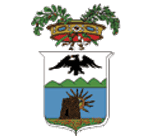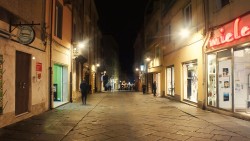Cosa vorresti visitare?
Cerca un luogo o qualcos'altro di tuo interesse in Sardegna...
Cerca un luogo o qualcos'altro di tuo interesse in Sardegna...
A little history. From 1700, Nuoro consolidated a reference role for the Sardinian territory. It developed then, from the second half of the nineteenth century, as an administrative center opening itself to the reception of Piedmontese officials of the Kingdom of Sardinia and continental traders. The adoption of the Agrarian reform (called Edict of the closing) of October 6, 1820, however, provoked strong dissensions in the region and riots due to the appropriation of land, hitherto used for civic and community use. Discontent culminated in the well-known Moti de su Connottu: On April 26, 1868 several hundred people assaulted the palace of the town hall and torched the deeds of sale of the land of the state. The banditry grew, many countries reached a very high crime rate and the state responded by sending several police troops, which did not prove quite effective. It is clear that it was not only poverty that moved many families Nuoresi to the emigration to America and the mines of northern Europe. In 1927, during the x-axis, Nuoro became the province
 [Pi_wiloke_quote quote = "The emblem of the province depicts in the upper Part 5 mountains, signifying the five historical regions that originally formed the province (Ogliastra, Marghine, Barbagia, barony and Sarcidano) surmounted by an eagle in flight to Recollection of the fascist regime that established the province; In the lower part is represented a Nuragh that indicates the numerous presence of Nuraghi in the territory and a rising sun representing the capital city: Nuoro. "Author =" "]
[Pi_wiloke_quote quote = "The emblem of the province depicts in the upper Part 5 mountains, signifying the five historical regions that originally formed the province (Ogliastra, Marghine, Barbagia, barony and Sarcidano) surmounted by an eagle in flight to Recollection of the fascist regime that established the province; In the lower part is represented a Nuragh that indicates the numerous presence of Nuraghi in the territory and a rising sun representing the capital city: Nuoro. "Author =" "]During the Second World War, Macomer was struck by bombing as well as the port of Arbatax. The capital was not, fortunately, bombarded although the city was equipped with underground shelters. In the second half of the twentieth century the capital had a demographic growth, but the province underwent changes from the point of view of the territory, yielding several countries in favor of other provinces. The same happened in 2001 with the establishment of the new provinces:
 The seat of the province is currently located in Piazza Italia while the old headquarters in Corso Garibaldi houses the Museum of Modern Art (M.AN.).
The seat of the province is currently located in Piazza Italia while the old headquarters in Corso Garibaldi houses the Museum of Modern Art (M.AN.).